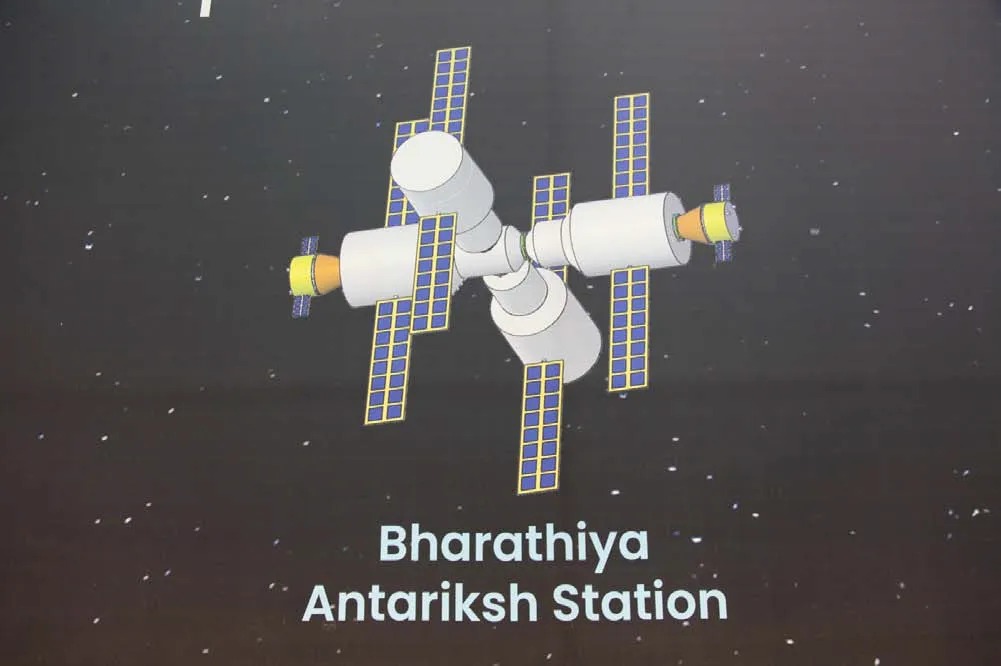
Follow WOWNEWS 24x7 on:

India is making a significant leap forward in space exploration with the unveiling of the Bharatiya Antariksh Station (BAS) model by the Indian Space Research Organisation (ISRO). This event marks a milestone in India's ambitions to operate its own space station, positioning the country among the elite nations running orbital laboratories.
Key Highlights of Bharatiya Antariksh Station Unveiling
The first module, BAS-01, is planned for launch by 2028, weighing approximately 10 tonnes and orbiting at 450 kilometers above Earth.
India aims to have five modules orbiting by 2035, building a comprehensive modular station for scientific research and human spaceflight.
BAS will feature an indigenously developed Environmental Control and Life Support System (ECLSS) to support astronaut survival and comfort.
The station will include the Bharat Docking System and Bharat Berthing Mechanism with automated hatch systems, enabling international cooperation and module integration.
Designed platforms accommodate microgravity research, technology demonstrations, and scientific imaging, with viewports dedicated to crew recreation and observation.
BAS incorporates safety features against radiation, thermal fluctuations, and space debris, alongside systems for refueling propellants and life support fluids.
The station supports extravehicular activities with airlocks and space suits, alongside advanced avionics for seamless operations.
It will serve as a major research hub for studies in space sciences, life sciences, medicine, and future interplanetary exploration.
BAS is expected to foster India’s entry into commercial space ventures, including space tourism, and promote global collaborations.
Significance for India’s Space Program and Beyond
The Bharatiya Antariksh Station will mark India’s entry into a very exclusive club, joining the International Space Station (operated by multiple nations) and China’s Tiangong station. By developing expertise in space habitats, life support, and orbital science, India positions itself to lead advanced space missions and inspire new generations in STEM fields.
This station will allow India to conduct critical experiments on microgravity’s effects on human health, test new technology in space environments, and develop capabilities for long-duration human missions to the moon, Mars, and beyond.
Future Prospects and Aspirations
With a modular design, the BAS will continue expanding and upgrading technology. The initiative complements ISRO’s growing ambitions in satellite launches, lunar missions, and commercial space enterprises. It embodies India’s dedication to innovation, scientific progress, and global leadership in space.
Conclusion
ISRO’s unveiling of the Bharatiya Antariksh Station is a proud moment for India and a step forward in its space journey. The station promises to open new frontiers in scientific research, international cooperation, and commercial space opportunities, reflecting India’s rising stature on the global space stage.
Sources: NDTV, India Today, Times of India, Udayavani, Financial Express




